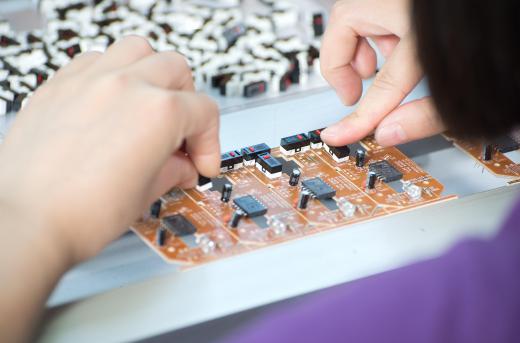Sometimes known as circuit board fingers, board fingers are the patterns used on printed circuit boards to carry signals over the boards. Often made using gold plating, the highly conductive nature of the fingers helps to enhance the efficiency of the circuit boards. Along with being highly efficient, it is not unusual for the gold content found in a board finger to eventually be harvested for reuse when and as the circuit board begins to wear out.
The presence of a board finger on a circuit board is important to the function of a circuit board. This is because the finger serves as the edge connector at the point where the connector plugs into the sockets that help to carry the electronic current and signaling. The gold content that is present in the plating of a board finger helps to enhance this electrical flow, which in turn allows the board to process signals quickly and with little to no failure rate.

Considered a mainstay in electronics manufacturing today, the use of the board finger in circuit board creation is common. Thanks to the inclusion of the finger design, much of the more complicated circuitry required in years past is no longer necessary. When configured properly, a board finger is capable of conducting an electrical signal in a manner that is not only much more efficient than older technology, but also allows for a more cost-effective operation of devices using these types of circuit boards.
As with any type of electronic component, a circuit board will eventually experience sufficient wear and tear, necessitating a replacement. When this occurs, there is often the effort to harvest the gold plating on the board finger. Doing so makes it possible to recycle that gold for use in other applications, rather than drawing on newer resources to create those newer boards or other products.
There are a number of companies that actively purchase and harvest the gold plating found on the board finger lines that appear on older circuit boards. It is not unusual for larger corporations to make arrangements to sell their older boards to these recycling companies as a means of generating a small amount of revenue from the now replaced boards. In turn, the recycling company can extract the gold from the board finger configuration on any older circuit board and prepare the gold for use in the manufacture of a wide range of products, including newer circuit boards.

